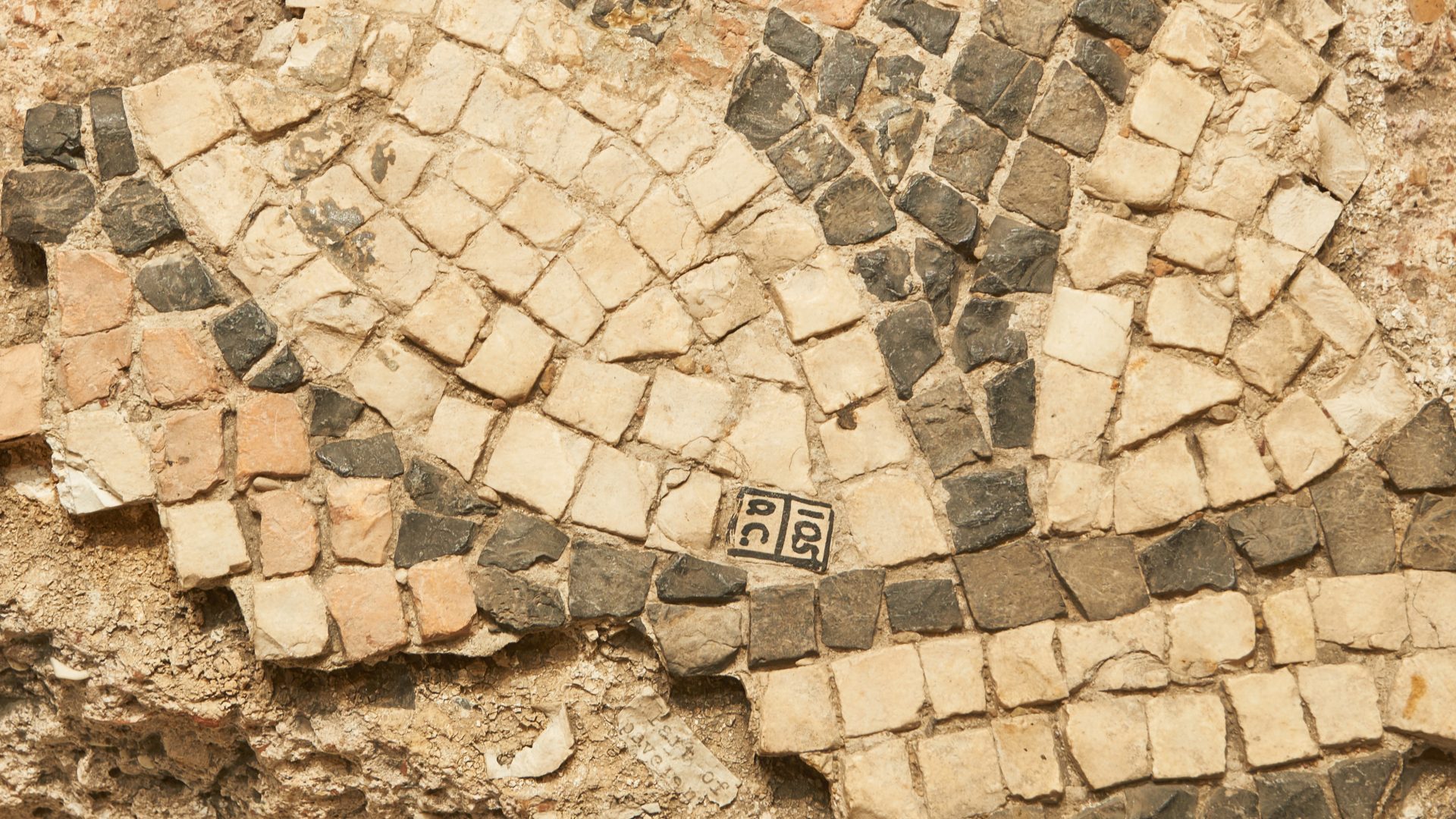From about 3000BC, Neolithic and then Bronze Age people lived on the downlands in small settlements.
Iron Age Britons had a large settlement near the coast at East Wear Bay, trading local ‘quern’ mill stones for goods from the nearby Roman Empire. After the Roman Conquest in 43AD, a large and luxurious Roman Villa was built on East Cliff above East Wear Bay; it was eventually abandoned around 400AD. The villa was discovered by archaeologist S.E. Winbolt in 1924. It had over 50 rooms, some of which were decorated with fine Roman mosaics.
In 1906 an Anglo-Saxon cemetery was found on Dover Hill, dating to the sixth and seventh centuries AD. 40 graves of men, women, and children were discovered, all part of a much larger original cemetery. The Dover Hill Cemetery was in use by 597AD when Saint Augustine arrived in Kent to introduce Christianity. In 630AD, Eanswythe, daughter of King Eadbald of Kent, founded the first nunnery in England at Folkcanstan. This is the first recorded mention of the name of
‘Folkestone’.

